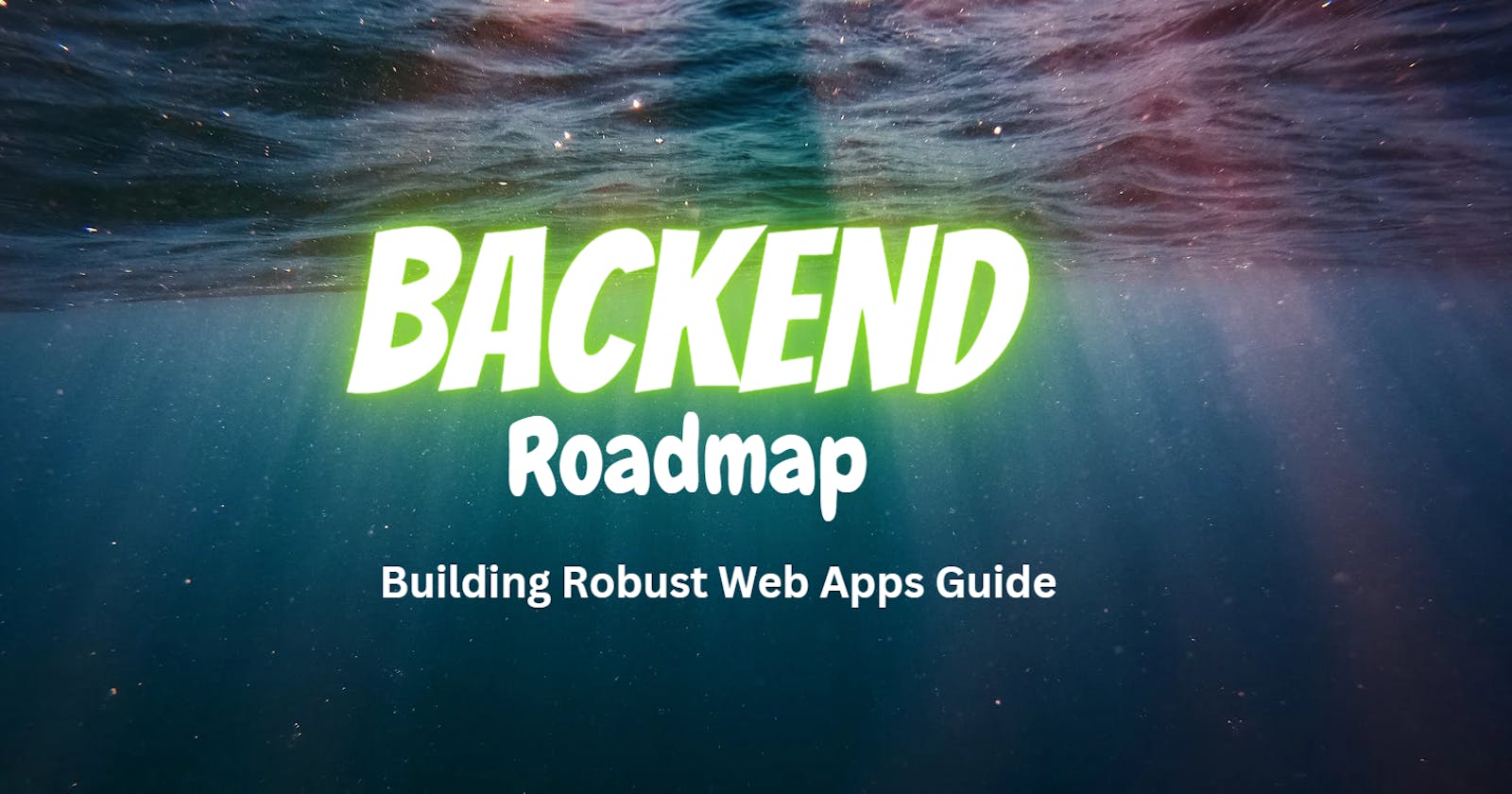Backend Roadmap- Building Robust Web Apps Guide

Introduction
Welcome to the new article on backend development! Have you ever wondered about the magic happening behind the scenes of a web application? Well, that's where the backend comes into play. It's like the powerhouse that brings together the server, application, and database, working harmoniously to make a web application come to life. Without it, the website you see simply wouldn't exist.
The backend serves as the foundation of any web application, playing a crucial role in its success. It takes care of essential tasks like storing data, ensuring security, and implementing the logic that makes your application function seamlessly. Without the backend, your application would be at a standstill.
Now that we grasp the significance of the backend, let's get into the exciting backend roadmap. Consider it your trusted guide, helping you navigate the diverse components of backend development. It covers everything from programming languages to frameworks, databases, APIs, and deployment options.
Foundations of Backend Development
Programming languages
Having a solid grasp of programming languages is crucial. Backend developers lay the groundwork for web applications, so they should be well-versed in server-side languages such as Python, Java, or Ruby. These languages enable them to write the logic and functionalities of web applications. By mastering these languages, developers can ensure the seamless operation of their web applications.
Databases
Databases play a fundamental role in backend development. Developers should be acquainted with working with databases. These serve as repositories for the data collected by the website or application. Developers must possess the skills to efficiently manipulate databases, ensuring smooth processing, storage, retrieval, and deletion of data without any issues.
Version control
Version control systems are like trusted companions for developers. They play a vital role in helping us keep track of code changes, pinpointing any hiccups that may arise, and collaborating seamlessly on projects, whether within or outside an organization. With these systems in place, working together on projects becomes a breeze, as we can effortlessly keep tabs on every single modification made to our code.
Backend Frameworks
Ready to explore the amazing Backend Frameworks? Great!
Backend frameworks bring structure and organization to your backend development, making your journey in web application development much smoother.
First, let's talk about the basics of Backend Frameworks. These frameworks consist of libraries, modules, and tools that simplify web application development by providing pre-designed templates for code structure and organization.
Now, let's see some Popular Backend Frameworks. Django, Flask, Ruby on Rails, and Express.js are just a few examples of widely used backend frameworks. These frameworks come with a plethora of built-in functionalities, such as Authentication, Routing, and Database Management. Don't worry if you're not sure which one to choose! We'll later explore a detailed comparison of these backend frameworks.
Now comes the exciting part: Comparing Backend Frameworks. Each framework has its own unique strengths and weaknesses. Django excels in robust security features, Flask offers a gentle learning curve and lightweight design, Ruby on Rails is ideal for rapid prototyping, and Express.js delivers high scalability and lightning-fast performance. Depending on your specific needs, you can select the framework that best suits you.
API Development
Interested in learning about APIs?
Simply put, an API (Application Programming Interface) is a set of tools, routines, and protocols used to build software applications. APIs allow different software systems to communicate with each other, making it easier to integrate various applications.
APIs come in different types, such as web APIs, operating system APIs, library-based APIs, and class-based APIs. Among these, web APIs are the most common and are primarily used for web-based applications.
Designing and developing APIs involves defining endpoints, specifying formats for requests and responses, and establishing authentication and authorization requirements. This process can be challenging but is essential for creating strong and efficient web applications.
Let's be honest: APIs may not be the most thrilling topic, but understanding them is crucial for backend development. As Aristotle once said, "The whole is greater than the sum of its parts." APIs are a vital part of the holistic web application development process.
Authentication and Authorization
Authentication and authorization play a vital role in backend development. Authentication ensures that we can verify the identity of users, while authorization grants or denies access to specific resources based on permissions. We can implement various techniques like two-factor authentication and OAuth for authentication.
For authorization, we have techniques such as role-based access control and attribute-based access control. By integrating these techniques with APIs, we can ensure secure access to our applications. It's important to remember that authentication alone doesn't grant unrestricted access. Authorization holds the key to managing resource access effectively. Understanding and implementing these concepts will help us build robust web applications.
Testing and Debugging
Testing and debugging are incredibly important when it comes to ensuring the smooth operation and reliability of backend applications. We utilize various types of testing, such as unit testing and integration testing, to proactively identify and address any issues before deployment. Additionally, debugging techniques like logging and tracing assist developers in swiftly pinpointing and rectifying errors.
It's crucial to allocate an ample amount of time and resources to testing and debugging in order to prevent any potential mishaps. Keep in mind that it's far better to detect and resolve bugs at an early stage rather than having to deal with their consequences further down the line. By adopting a proactive approach to testing and debugging, we can foster robust and dependable backend applications.
Server Deployment and Management
When it comes to hosting and deploying a backend application, you have various options available, including cloud-based solutions and self-hosting. Once your application is deployed, it's essential to prioritize proper server management and maintenance to ensure its smooth operation.
Conclusion
To sum it up, creating a strong web application involves mastering backend development, using suitable frameworks and APIs, ensuring secure authentication, and conducting thorough testing and debugging.
Additionally, proper server deployment and management are vital for a successful app launch. Keep these key points in mind, and you'll be well on your way to developing exceptional backend systems.
Thanks for reading 🫡, See you in the next article.

 Develop and Solve
Develop and Solve